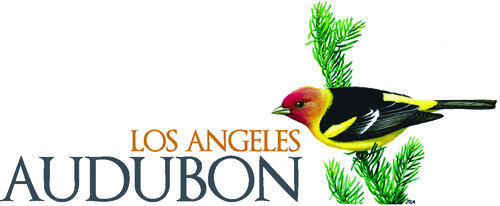One of the many privileges Mother Nature allows us is the miracle of growing our own food.
Birds of the Season – December 2019
Who claims we don’t have seasons in southern California? Though admittedly they are not as pronounced as they are elsewhere in the country, they are nonetheless distinct and the changes in avifauna that accompany them are significant. Aside from normal seasonal transformations, climate change is affecting and altering habitats and ecosystems.
Esperanza Elementary School- Community and Habitat Building in the heart of Los Angeles
Esperanza Elementary School Students with Principal Brad Rumble and Los Angeles Audubon staff & volunteers and Baldwin Hills Greenhouse Program students.
Published by Los Angeles Audubon Society in the Western Tanager, Vol 86 No. 3 Jan-Feb 2020
In October and November 2016, staff and Baldwin Hills Greenhouse Program students from the Los Angeles Audubon Society (LAAS) installed a schoolyard habitat at Esperanza Elementary School with the help of students and parents. This habitat is filled with California native shrubs and trees including, California Sagebrush, Black Walnut, White Sage, Gum Plant, and more. There are many benefits to installing this habitat including, but not limited to:
• Educational Resource — Teachers can use it as an outdoor classroom and cover many topics including the water cycle, plant adaptations, habitat, ecosystems and many more.
• Decreases Water Runoff — Permeable surfaces in the habitat allows rainwater to infiltrate the soil, providing water for the plants. This reduces pollutants to be carried away to the ocean.
• Increase in Native Wildlife — Esperanza is listed as a hotspot in eBird with 66 species and counting. Many migratory bird species use the habitat as a stopover site including the Yellow-rump Warbler, Burrowing Owl, and White-crowned Sparrow. In addition, other wildlife are found in this habitat including butterflies, praying mantis, ladybird beetles, native bees species, etc.
• A Greenspace in the City — Los Angeles is highly urbanized, especially near Downtown LA. The younger students are surrounded by asphalt, but this small green space allows for exploration and wonder.
• A sense of community — The surrounding community is brought together for planting and bird-watching.
Community Bird Walks
This past November [2019] LA Audubon staff member, Emily Cobar, concluded two grant projects with the South Bay/Palos Verdes Audubon (SB/PV) and the North American Association of Environmental Education (NAAEE) ee360 Community Fellowship and the Esperanza Elementary School community.
In past Western Tanager newsletters (September/October 2018 and September/October 2019 issues) – Emily covered how she was a recipient of the SB/PV Audubon mini-grant to lead community bird walks and to create calendars for the nature walk participants that included their own artwork and photographs; and how the ee360 opportunity offered her an incredible fellowship that provided professional development and leadership training. Through the fellowship, she also received a grant to provide stipends to college students and/or recent college graduates who lead the nature walks, scientific illustration workshops, and other environmental education activities at Esperanza. In the conservation and education field, there are a myriad of unpaid internships or volunteer programs, so stipends were significant to reward their time commitment and their meaningful work to the community.
The nature walks started with coffee and breakfast for the participants. Then, Esperanza Elementary School principal, Brad Rumble, led a bird walk on campus while the ee360 interns assisted. After the bird walk, the ee360 interns, led a discussion about bird migration and introduced the migration game (an education resource created by Environment for the Americas). The students loved this game as they got to be a bird and go through a migration journey.
After the migration game, we talked about watershed and water runoff. The students conducted an experiment where they pour water on asphalt and then pour water in the habitat. The students got to hypothesize, observe, and draw conclusions on the experiment.
The day had a lot of content, but it was fun and very engaging. A week after the event, one of the young participants said that they wanted to recreate the migration game– which was very meaningful to hear that a simple game can make a big impact. Is this the end though?
No, community building is not a one event type of deal. In 2020 and beyond, Emily and LAAS staff and interns hope to continue this bond of community and nature whether through nature walks or habitat restoration.
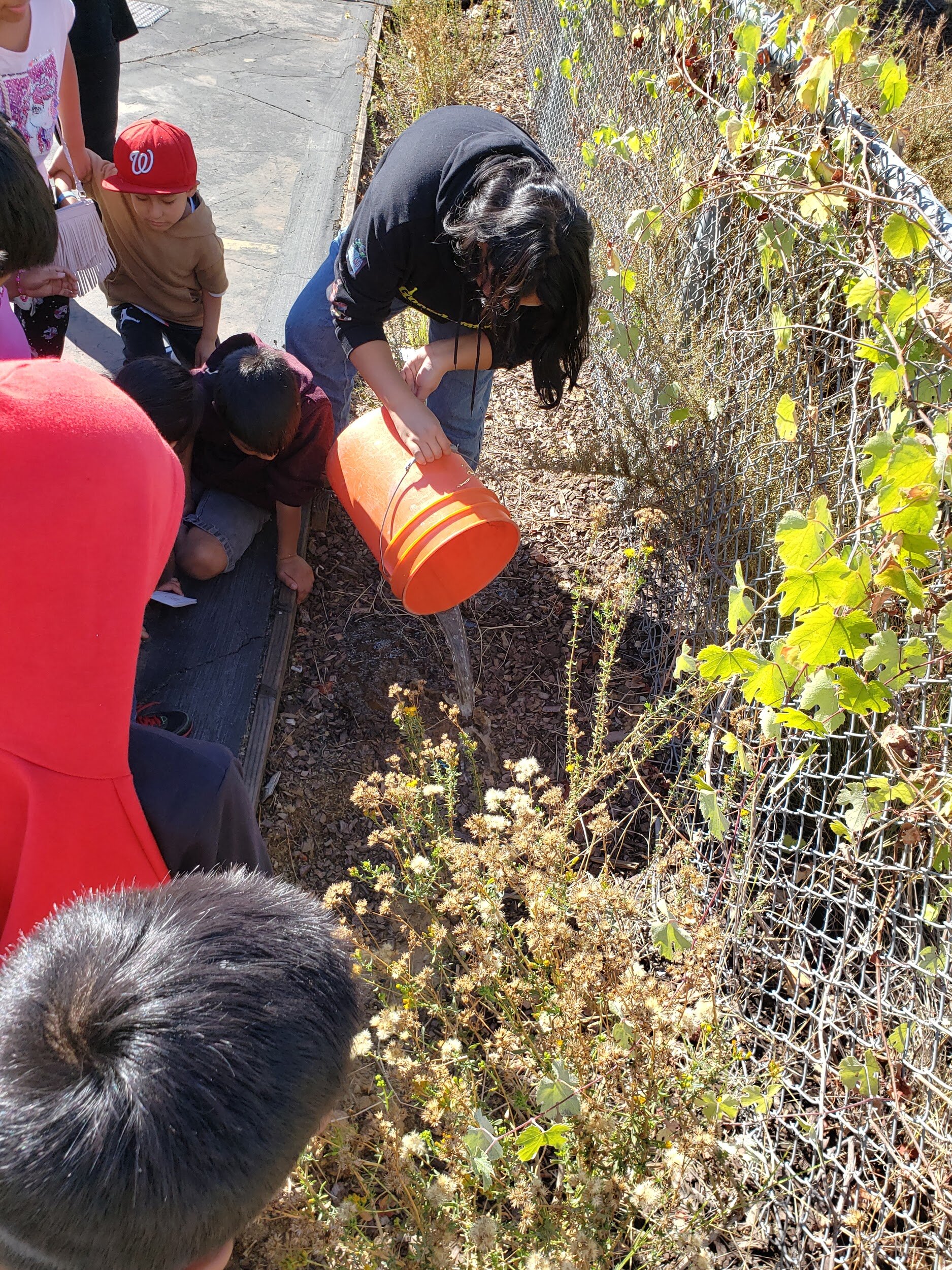
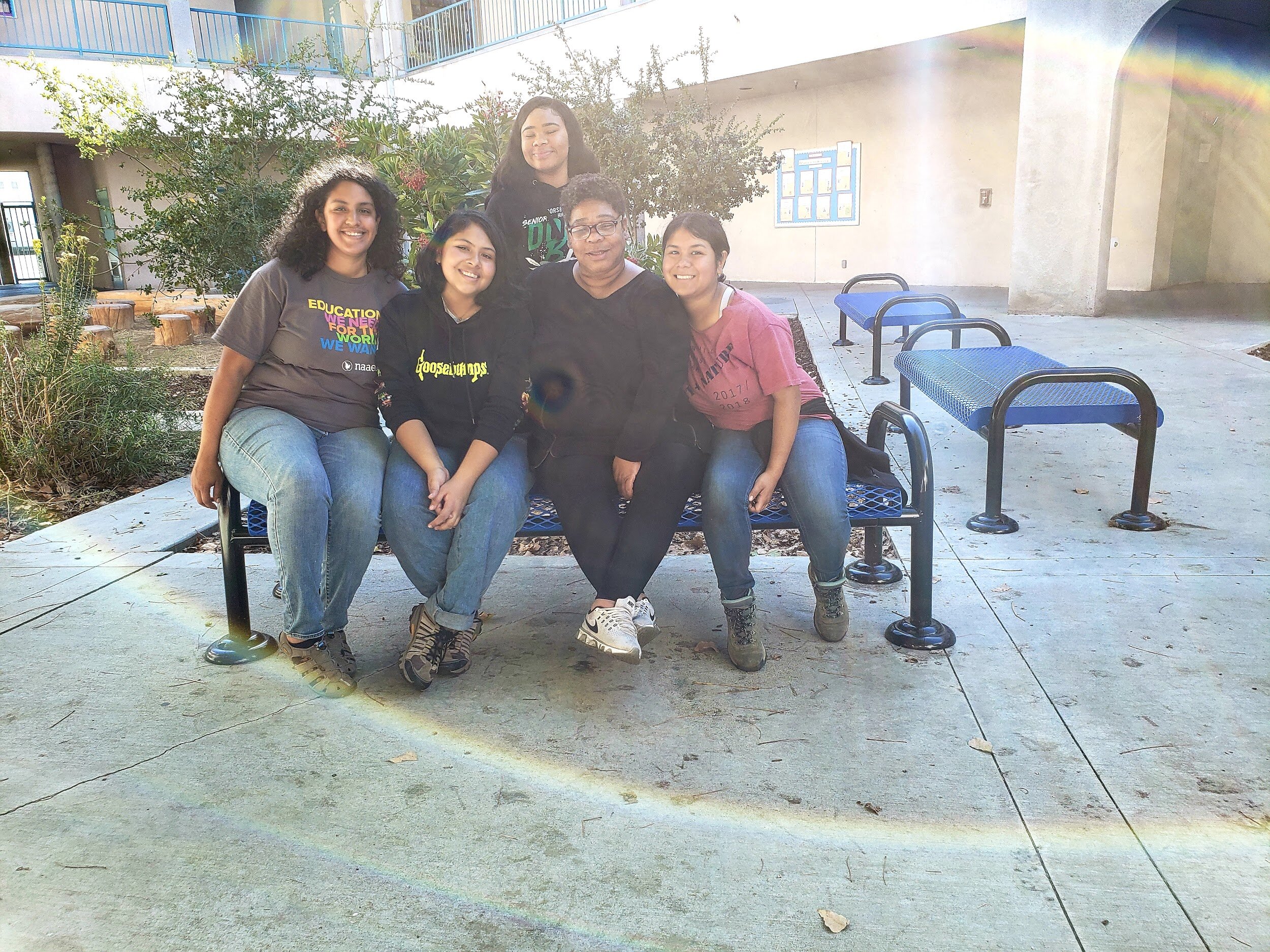
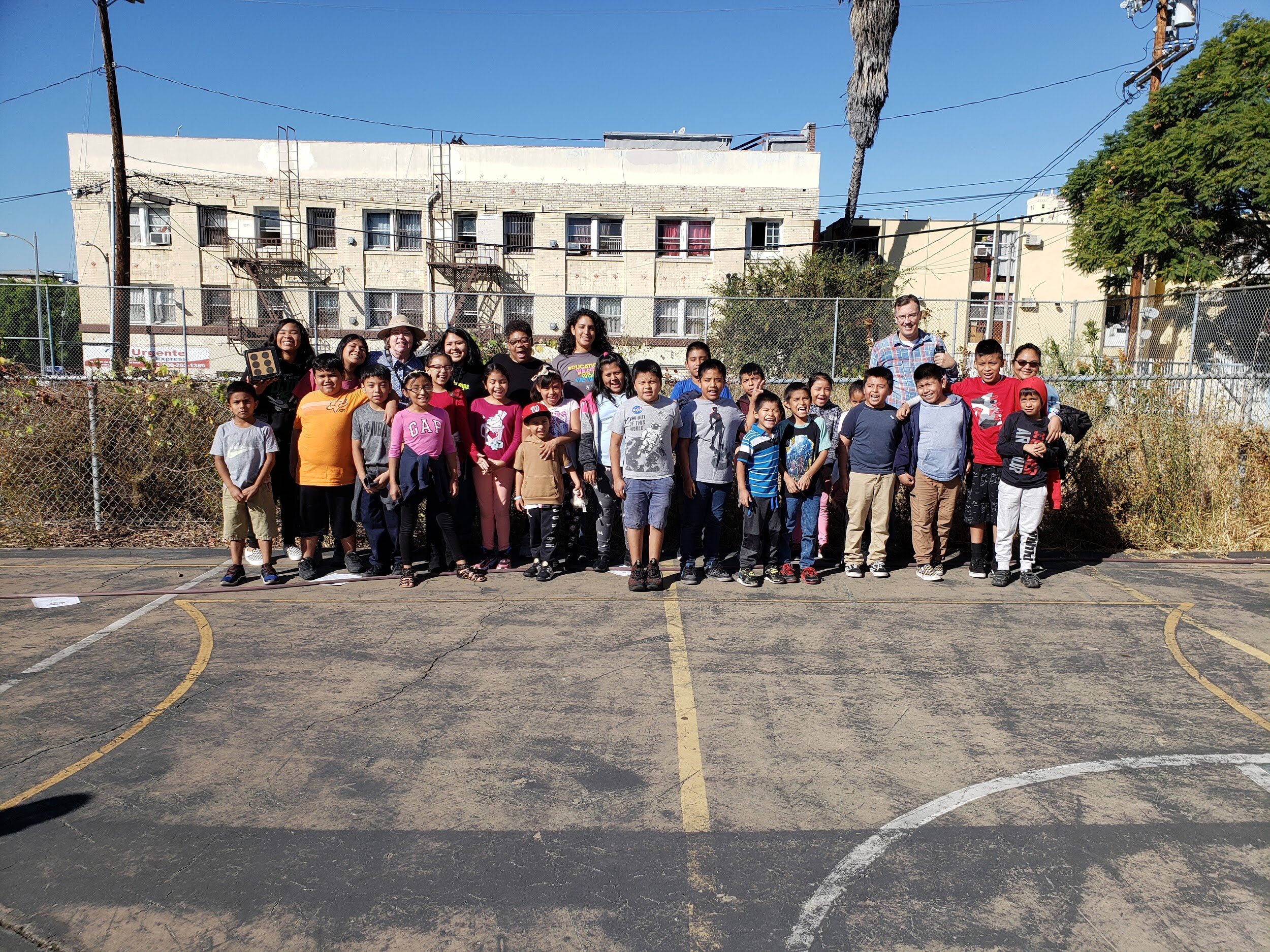
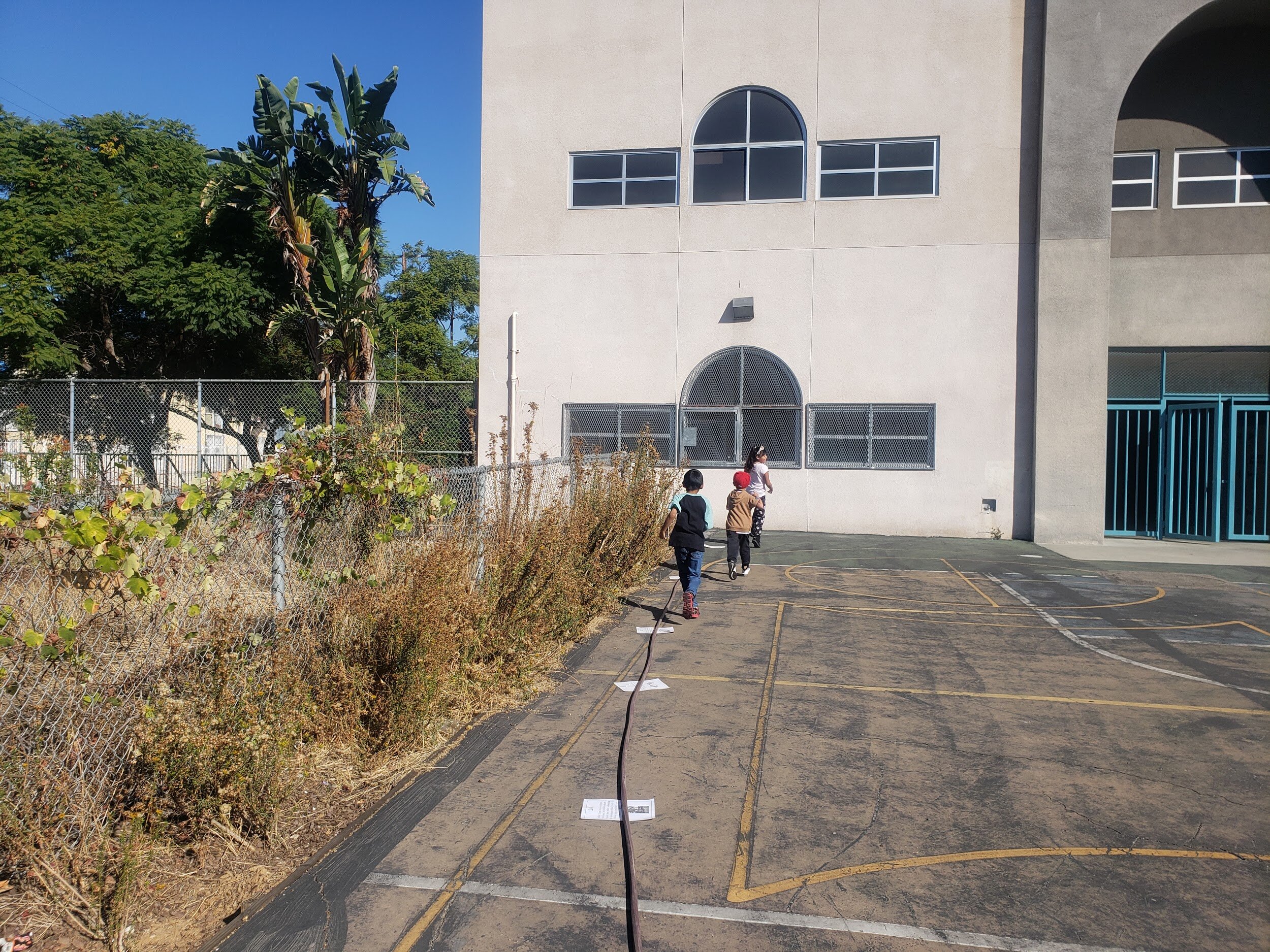
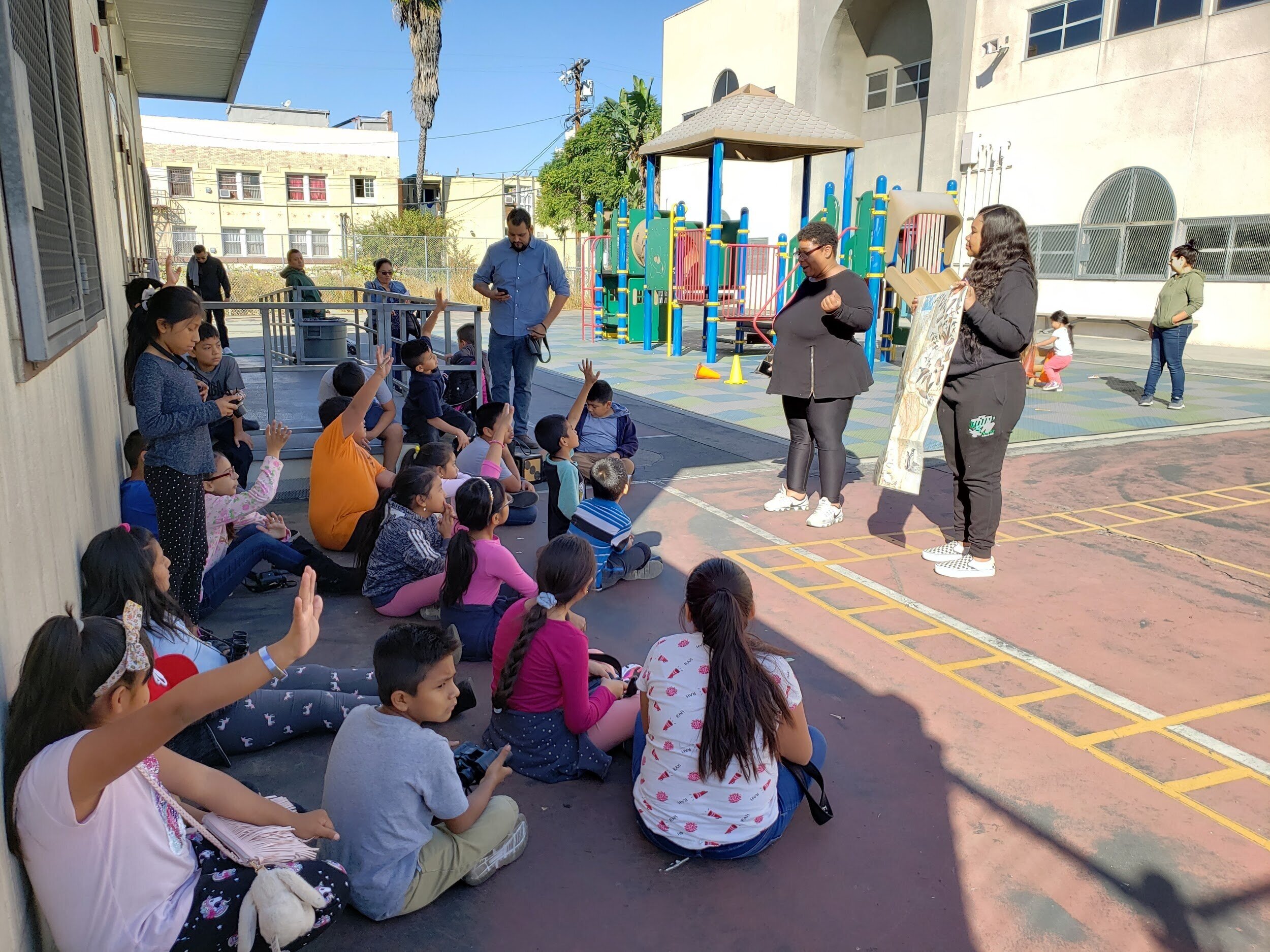
Habitat Restoration and Collaboration
On December 7, 2019, Los Angeles Audubon staff, community volunteers, along with students and their parents, helped to expand Esperanza’s schoolyard habitat. Two areas were planted with native species: the large courtyard at Esperanza Elementary School, and the area along Wilshire Blvd. Students of Esperanza spread out along the campus photographing everyone hard at work and also photographing birds out and about. Rain held out just long enough for a group of hardworking volunteers from Fulbright and from the Westwood Presbyterian Church, as well as students with their families to plant toyon, ceanothus, penstemon, buckwheat and other native plants to attract birds and pollinators. Many of the species were chosen to tolerate shady conditions because the courtyard area is often in part to full shade during the year. Principal Brad Rumble and his students led the group on a campus tour at the end of the planting to view the original schoolyard habitat, planted by the school community and Los Angeles Audubon in 2017 that is thriving with the recent rains.
As the event came to an end, every single person was given the chance to disperse native plant seeds of California Poppies and other perennials onto the habitat area they weeded from invasive plants. The event was supported by US Fish and Wildlife and Westwood Presbyterian Church.
The following photo gallery shows the habitat restoration at Esperanza in progress.

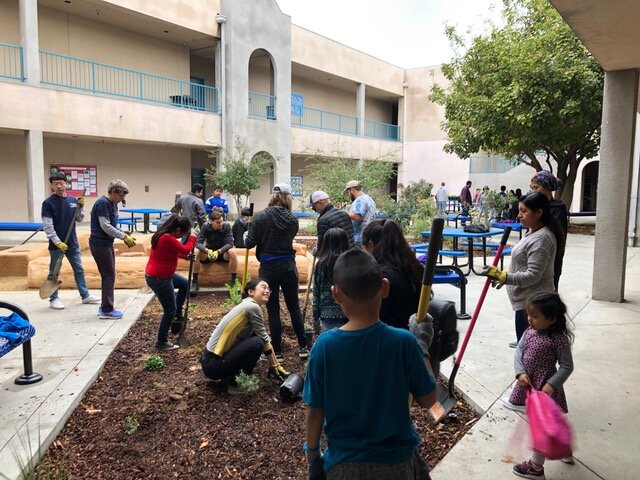
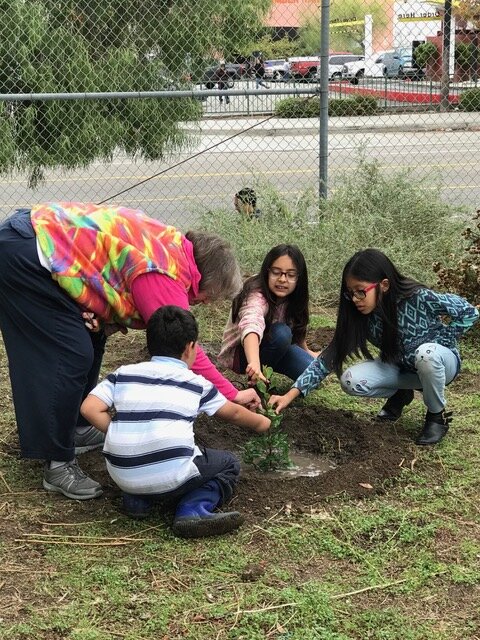
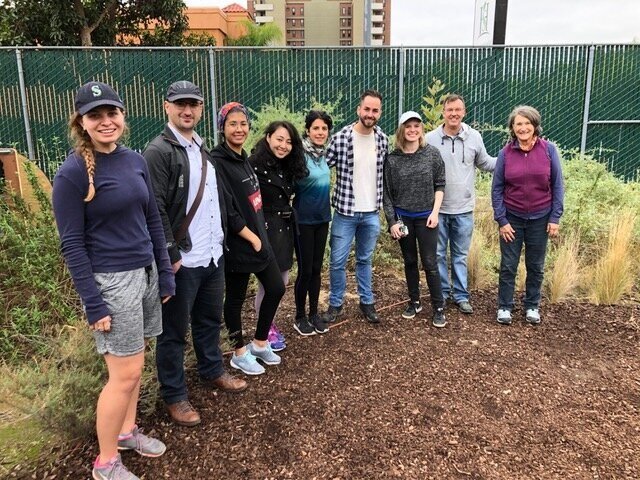
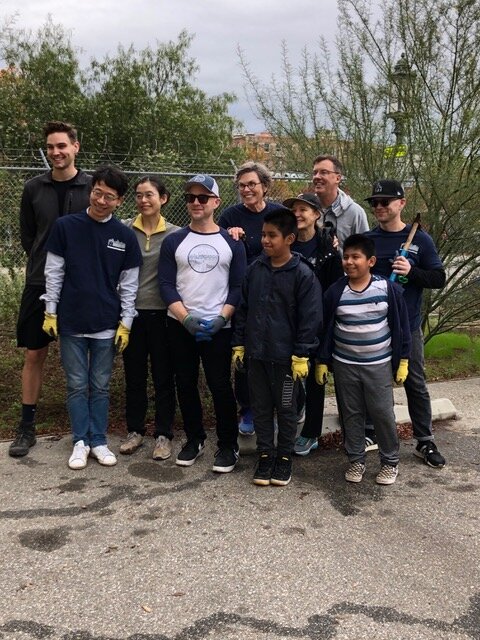
Western Tanager, Vol. 86 No. 3, Jan-Feb 2020
INSIDE THIS ISSUE, Vol. 86 No. 3, Jan.—Feb., 2020
Birds of the Season — October 2019
There’s no doubt that fall migration is a great time for birders. “Southbound migration” might be a better term, given that the passage takes place from June through November. Even that isn’t exact, as not all migrants are headed south. Tropical Kingbirds are an obvious example of a species whose movements are to the north and west.
Message From Your President
As President of Los Angeles Audubon Society, I want to thank you, members and volunteers, all for a great year! As I look back over 2019, I am grateful to have been a part of our efforts at conservation, community science, education, and spreading the joy of bird watching. With the recent reports of the decline of bird numbers (insert citation), our efforts at local conservation and habitat restoration is what we can do to make a difference. Think globally but act locally – That is what we are doing here in Los Angeles to provide more and better habitat for birds and humans alike.
Western Tanager, Vol. 86 No. 2, Nov–Dec 2019
INSIDE THIS ISSUE, Vol 86 No. 2 Nov–Dec 2019
•Malibu Coast - Field Trip Report
•BOOK REVIEW: The Soul of an Octopus — A Surprising Exploration into the Wonder of Consciousness
•The Los Angeles Audubon Society’s Condor Fund — A Short History
•Birds of the Season - October 2019
SCHEDULES
Field Trips https://www.laaudubon.org/field-trips
Bird Walks https://www.laaudubon.org/bird-walks
MONTHLY SPEAKER SERIES
MONTHLY SPEAKER SERIES PRESENTATIONS — Nov. 13 & Dec. 11, 2019
• Wed., Nov. 13, 2019 — UCLA: A Living Laboratory for Urban Ecology and Sustainability, with speaker Nurit Katz
• Wed. Dec. 11, 2019 — Galapagos Memories, presented by Photographer / Naturalist, Jerome Gaw
The Los Angeles Audubon Society’s Condor Fund: A Short History
Since 1934, the Los Angeles Audubon Society has been publishing a regular newsletter titled Western Tanager. In reviewing back issues for mentions of the California condor, I was struck by the number of mentions to the group’s fund for the condor.
In this post, I report some of what I learned about the organization’s fund-raising for the California condor from issues of Western Tanager dated 1939-1969.
Field Trip Report: Malibu Coast — Oct. 5, 2019
By Read Howarth | Photographer, Grace Wang
The Malibu Coast Field Trip was a success with 12 participants at 8:00 am at Malibu Lagoon. The day got off to a great start with a Black-throated Gray Warbler adjacent to the parking lot in a sycamore tree as we gathered under the shaded ramada overlooking the lagoon.
BOOK REVIEW: The Soul of an Octopus — A Surprising Exploration into the Wonder of Consciousness
BOOK REVIEW: By Savannah House, Baldwin Hills Greenhouse Intern, October 3, 2019
Western Tanager, Vol. 86, No. 2, Nov.-Dec. 2019
Contributor Savannah House is a senior at Culver City High School and a third-year intern in the Baldwin Hills Greenhouse Program. Writing, science, and teaching are important activities in her life. Here she reviews of The Soul of an Octopus (2015) in an effort to get people to expand their connection to and compassion for the natural world.
Sy Montgomery strives to discover who an octopus is in her New York Times bestselling book: The Soul of an Octopus — A Surprising Exploration into the Wonder of Consciousness
“And there is another way we alter our experience of time. We, as well as other animals can mimic another’s emotional state. ….Perhaps, as we stroked her in the water, we entered into Athena's experience of time — liquid, slippery, and ancient, flowing at a different pace than any clock. I could stay here forever, filling my senses with Athena’s strangeness and beauty, talking with my new friends.” —Sy Montgomery, The Soul of an Octopus
Magnificently written, the endlessly beautiful and mystical story of The Soul of an Octopus by Sy Montgomery, follows the author through her journey of meeting and falling in love with four different octopuses - Athena, Octavia, Kali, and Karma- at the New England Aquarium as well as others during ocean adventures. At the New England Aquarium, she falls most in love with Octavia, who the story follows most closely, from Octavia’s entrance into the aquarium through her relatively short life.
To open the book, Montgomery settles the debate between “octopi” and “octopuses” by explaining that it is grammatically incorrect to “put a Latin ending -i- on a word that is derived from Greek.” The rest of the book follows the same witty and addictive qualities that make it nearly impossible to put down.
Throughout her adventures, Montgomery asks intriguing questions - some of which she finds answers to, while others hang in the air unanswered by the end of the book. The most pressing question Montgomery asks and strives to discover is “Who is an octopus?” The question is answered only though others, such as “What is the behavior of an octopus?” and “Do they remember those who visit them?” Largely, Montgomery discovers, this is a question of consciousness - in particular the comparison between human consciousness and other animals’ consciousness.
Along with describing the other animals around the octopuses, Montgomery tells her readers about her own life. She is married with many animals at home, but her Border Collie is her favorite and presumably one of her best friends. The relation between Montgomery’s life, that of the octopuses and that of the New England Aquarium later in the book leaves the reader feeling attached to the different parts of the story and thus making the digestion of this unfamiliar topic easier as she fishes out the humane characteristics of every aspect in the story.
Montgomery also meets and introduces the readers to many friends she finds through the aquarium. Most noteworthy are Bill, the man who manages and calls the shots for the octopuses living at the aquarium; Wilson, who helps Montgomery in her quest to get to know the different animals; and Anna, the high school intern who is quiet with immense compassion for the animals and finds therapy within the aquarium. Anna, in particular, was one of my favorite parts of the story. Her gentle touch and fearlessness with the animals were endearing. It gave an even further humanization to the animals.
The Soul of an Octopus opens your eyes to the natural world around you and leaves you with new-found knowledge and compassion for the world, you come to realize, you have largely overlooked. This true story is both motivating and captivating, even to those who know little about octopuses going in.
